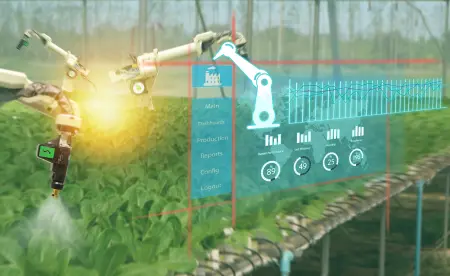- Home
- About
Your reliable partners for IOT & IIOT Solutions
We intend to provide a reliable and multi-connectivity IoT and network platform to help our Customers and Partners successfully deploy their IoT use cases relying on robust ICT & IOT infrastructures”


- Services
Services
We provide the best breed of professionals in designing ICT & IOT services and solutions with quick turnaround times.



- Products
Products
Find the widest range of IT and automation products from the best of brands in IT, Communication, Audio Video , Trackers, Gateways, Building management systems and Utility services.


- Partners
- Blog
- Contact
The Symbiotic Relationship between IT Infrastructure and IT Management: A Comprehensive Guide

In today’s digital age, information technology (IT) infrastructure forms the backbone of virtually every organization, serving as the foundation upon which business operations are built and managed. However, the effectiveness and efficiency of IT infrastructure rely heavily on robust IT management practices. In this comprehensive guide, we’ll delve into the symbiotic relationship between IT infrastructure and IT management, exploring how they complement each other to drive organizational success.
Understanding IT Infrastructure
IT infrastructure encompasses the hardware, software, networks, and facilities that support the delivery of IT services within an organization. This includes data centers, servers, storage devices, networking equipment, and more. The primary role of IT infrastructure is to provide a reliable and scalable platform for hosting applications, storing data, and facilitating communication across the organization. A well-designed IT infrastructure is essential for ensuring business continuity, supporting growth and innovation, and meeting the evolving needs of users and stakeholders.
The Role of IT Management
IT management, on the other hand, refers to the processes, policies, and practices used to plan, deploy, monitor, and maintain IT infrastructure and services. It encompasses a wide range of activities, including strategic planning, budgeting, project management, security management, and service delivery. Effective IT management is crucial for aligning IT investments with business objectives, optimizing resource utilization, mitigating risks, and ensuring the overall reliability and performance of IT infrastructure. Additionally, IT management plays a key role in fostering collaboration and communication between IT teams and other business units, facilitating the delivery of IT services that meet the needs of users and stakeholders.
The Symbiotic Relationship
The relationship between IT infrastructure and IT management is symbiotic, with each playing a crucial role in supporting and enhancing the other. A well-managed IT infrastructure is essential for enabling efficient IT management practices. For example, having a robust monitoring and alerting system in place allows IT managers to proactively identify and address potential issues before they impact business operations. Similarly, effective IT management practices are necessary for optimizing the performance and reliability of IT infrastructure. This includes implementing rigorous change management processes, conducting regular security assessments, and ensuring compliance with industry regulations.
Enhancing Organizational Efficiency
By integrating IT infrastructure and IT management, organizations can enhance operational efficiency, reduce costs, and improve overall productivity. For example, implementing automation tools and standardized processes can streamline IT management tasks, allowing IT teams to focus on strategic initiatives rather than repetitive administrative tasks. Additionally, leveraging cloud-based solutions and virtualization technologies can enhance the scalability and flexibility of IT infrastructure, enabling organizations to adapt quickly to changing business needs.
Ensuring Business Continuity and Resilience
Another critical aspect of the symbiotic relationship between IT infrastructure and IT management is ensuring business continuity and resilience. A well-managed IT infrastructure is essential for minimizing downtime and ensuring the availability of critical IT services, even in the face of unforeseen disruptions such as hardware failures, cyber attacks, or natural disasters. Effective IT management practices, such as implementing disaster recovery and business continuity plans, conducting regular backups, and implementing robust security measures, are crucial for mitigating risks and ensuring the uninterrupted operation of IT infrastructure.
Conclusion
In conclusion, the symbiotic relationship between IT infrastructure and IT management is essential for driving organizational success in today’s digital world. By integrating IT infrastructure and IT management, organizations can enhance operational efficiency, ensure business continuity and resilience, and support growth and innovation. As technology continues to evolve, organizations must continue to invest in both IT infrastructure and IT management to remain competitive and achieve their business objectives.

